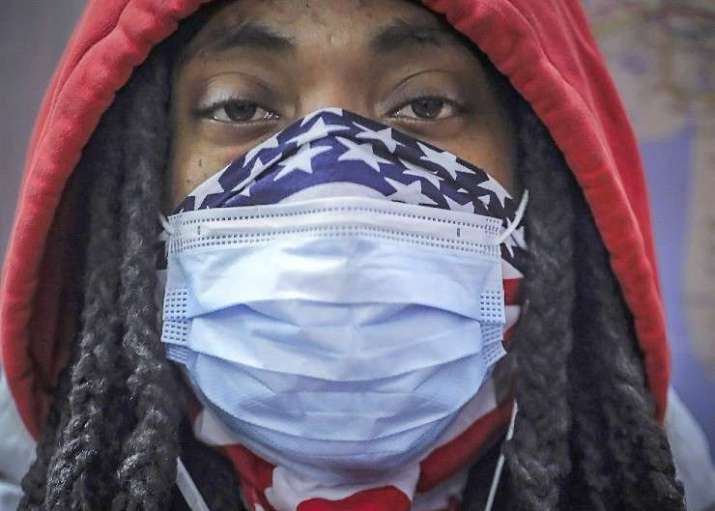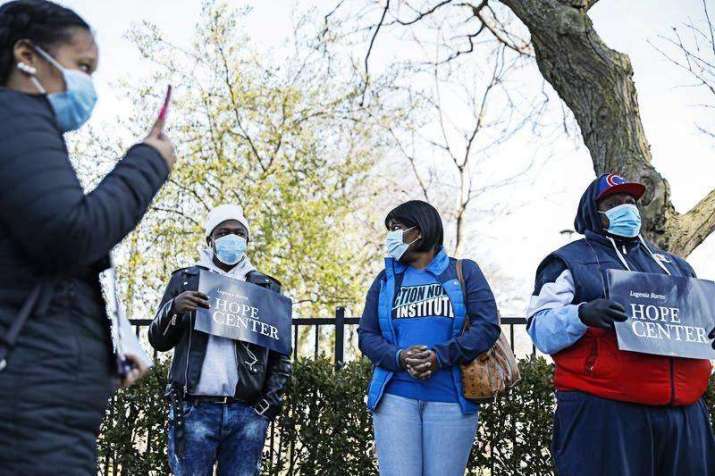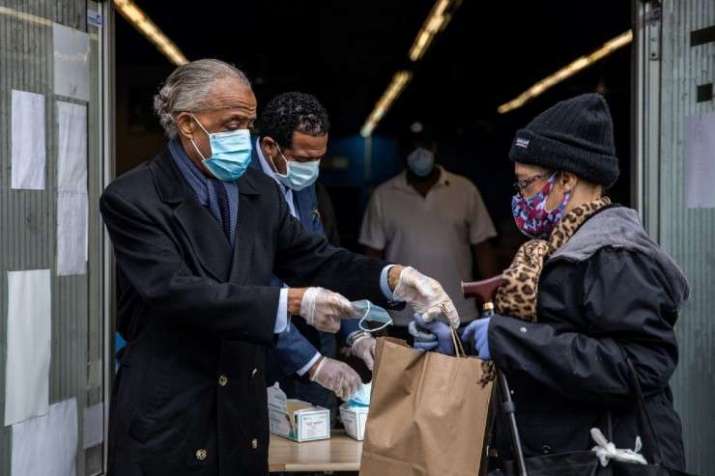
As the COVID-19 pandemic continues to claim lives across the globe, scattered data demonstrate that communities of color—and particularly African Americans—in the US are being disproportionately affected by the health crisis. For a number of weeks now, human rights activists, medical professionals, and politicians have been calling on the federal government to be transparent about racial demographic data, so that appropriate measures can be taken to protect the most vulnerable.
Until recently, the Center for Disease Control (CDC) had failed to publish any data at all addressing racial demographics, yet by the end of March it was already clear that the pandemic had been ravaging black communities. The Associated Press was one of the first to carry out an in-depth analysis of racial demographic data, examining “more than 4,450 deaths and 52,000 COVID-19 cases from across the country, relying on the handful of state and local governments that have released victims’ race.” (PBS News) While African Americans make up approximately 21 per cent of the population in the regions covered by the analysis, they accounted for 42 per cent of the victims of the virus.
To many of those advocating transparency when it comes to racial and ethnic COVID-19 data, this disparity is no surprise: the CDC’s findings from historical pandemics clearly show that black communities are always among the hardest hit. Therefore the CDC’s failure to collect and publish such data in relation to COVID-19 willfully turns a blind eye to communities that are known to be particularly underserved. In response to mounting criticisms, the CDC recently released some race and ethnic data relating to COVID-19 hospitalizations and mortalities; but many feel the numbers are misleading, particularly in light of the fact that minority groups are the least likely to have access to testing—and so far there has been no transparency about who is being tested.

Some are calling this crisis within a crisis “the two pandemics:” COVID-19 is the second, while the first pandemic refers to the historical and systemic racism that puts black communities—and other communities of color—at a serious disadvantage. Insight meditation teacher and author Dr. Ruth King has spoken and written extensively on issues of race in the US. In an interview with Best Self Media, King explained that among racial groups there exist common stereotypical narratives, and she points to one among white people that goes: “I don’t see color. Aren’t we all the same?” In the same way, some may wonder what the point is of focusing on racial demographics when the virus “doesn’t discriminate” and is taking a devastating toll on people and communities across the world.
However, King explains that while the sentiment “I don’t see color” can be well intended, it has the impact of completely whitewashing the experience of a person of color. After all, people of color cannot help but experience the effects of racial inequity, and therefore only those who come from the dominant white perspective have the freedom to not see color. King writes: “Whites have the privilege of choosing whether to challenge the status quo. Because of the unacknowledged benefits of not challenging the status quo, many whites choose silence, distance, and safety over the discomfort of change, intimacy, and more honesty. This is how privilege works.” (Best Self Media) The same goes for the pandemic—to believe that it is affecting us all in the same way is to deny the existing systems, policies, and practices that continue to perpetuate inequity.
A post from an unknown author that has been circulating on social media describes this significant discrepancy by likening the current health crisis to a storm. While it is true that we are experiencing this storm together, the post asks that people recognize that our diverse social and economic statuses mean that we are being impacted in significantly different ways. One household may, for example, believe that COVID-19 is nothing to worry about, while another is left grieving after having lost a loved one to the virus. Parents in one home may be enjoying the opportunity to slow down and spend time with their children, while another doesn’t qualify for unemployment and is currently unable to put food on the table. Yes, we are all experiencing the storm, but we are not all in the same boat and our journeys are very different.

This analogy is particularly relevant when it comes to race: “All one has to do is stand on a platform and you’ll see that the trains are filled with black and brown and low-income people going into communities to service those who are able to telecommute,” said Eric Adams, president of New York City’s borough of Brooklyn. (PBS News) African Americans and people of color form a substantial proportion of the country’s first responders, whether it be working in hospitals and long-term care institutions, driving buses, or working at grocery stores. They are less likely to have access to unemployment benefits or to be able to work from home. They also suffer from more chronic health conditions (such as diabetes and obesity), are less likely to be insured, and often live in areas that have limited access to quality healthcare services. All of these factors make them more vulnerable to the pandemic.
In Buddhism, we are encouraged to gain insight into the way things really are. While ignorance is the cause for our suffering, we have the opportunity to develop wisdom and insight, and only this will enable us to heal. Remaining blind to the facts and figures of this pandemic is unproductive, and will only perpetuate suffering. Instead, are we willing to look reality in the face and make positive changes to systems and policies that have left black communities so vulnerable?
As Dr. King explains: “It’s so important that in working with racism as a heart disease, that we take the time to have a clear diagnosis of the problem so that we’re not trying to quickly fix something before we really understand the conditioning—what’s given rise to it. We need to understand how we got here. There’s a lot offered in part one that supports us in seeing how the patterns of harm have been passed along from generations. It’s not something to feel ashamed about, it’s something to befriend, so that it’s not acting out in other ways. When we’re unconscious about something, it just repeats itself.” (Best Self Media)
See more
Outcry over racial data grows as virus slams black Americans (PBS)
Racial toll of virus grows even starker as more data emerges (PBS)
Interview: Ruth King | Healing Racism from the Inside Out (Best Self Media)











